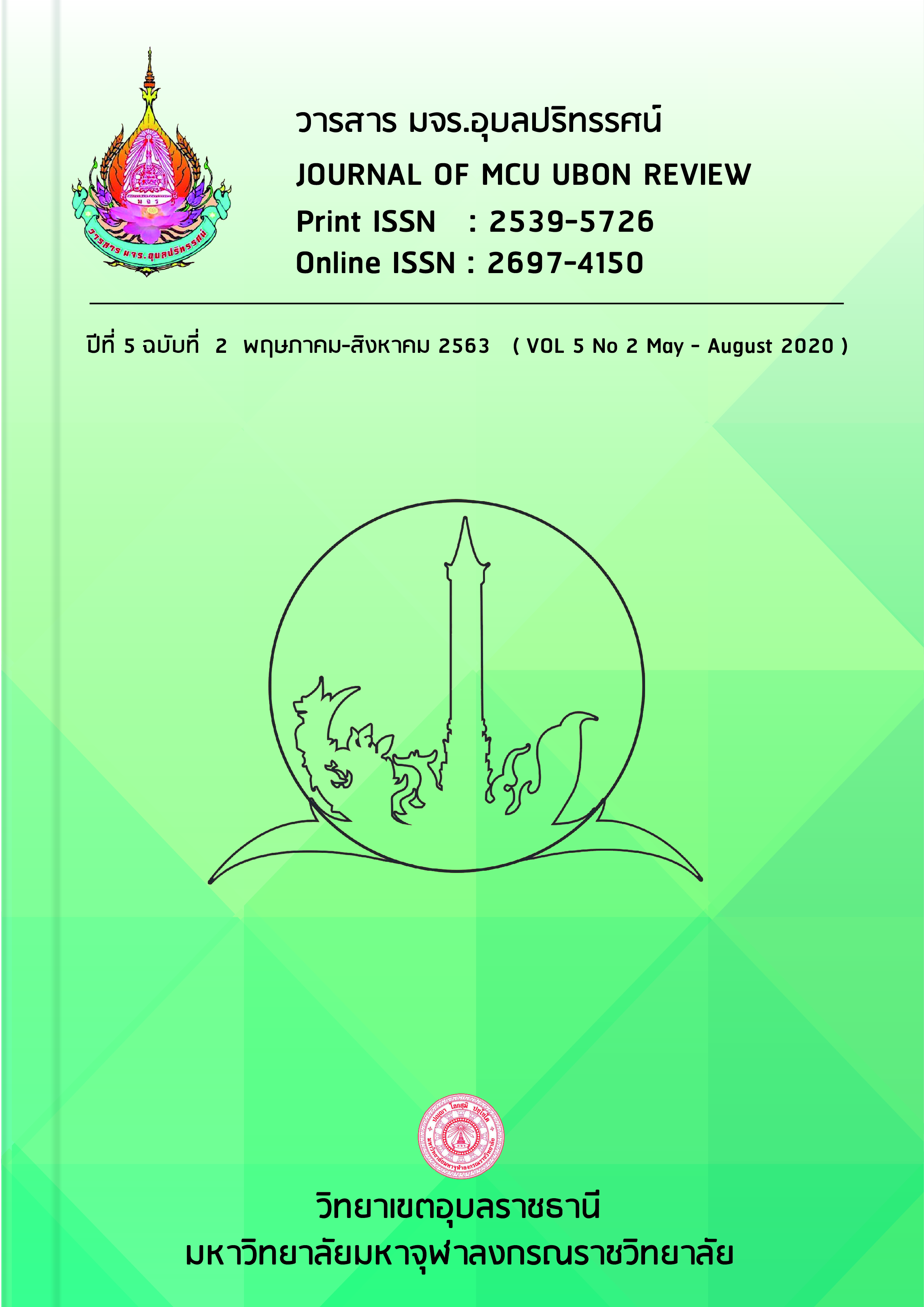CUIDELINE FOR PROMOTING BUDDHIST ART CONSSOMTION OF UPOSATHA IN NAKHONRATCHASIMA PROVINCE.
Main Article Content
Abstract
Target areas especially the chapels are inevitably very important for the community in performing religious rituals. However, there is one thing that adorns with the stories in Buddhism i.e. Buddhist art of the chapels that encourages belief, faith and the spiritual exquisite beauty.
The important problems of Buddhist art of the chapels are artisan work with various styles but unable to conserve the traditional Buddhist art. There have been changes according to the eras and lack people to inherit. Importance of Buddhist art of the chapels in Nakhon Ratchasima, the Buddhist art of the chapels that appears to be important for Buddhism regarding beliefs, faith, and history of the story of Buddhist art that can be adorned or created in the chapels or must not be distorted and the model can be developed and extended to other chapels. The importance, therefore, depends on the determination of Buddhist art models including architecture, sculpture, and painting. In this Buddhist art there are historical traces which are consistent with the ideas and beliefs of the local people in each era.
In Buddhist art conservation of the chapels in Nakhon Ratchasima province, Buddhist art can be classified into 3 major categories, which are architecture, sculpture and painting. In the Buddhist art, the word art means a work of art based on beliefs and faiths in the religion influenced by the teachings of the Lord Buddha. The important art is architecture, sculpture and painting. The conservation of Buddhist art appearing in this Buddhist art which has important features in painting that appreciates Buddhism specially reflecting the teachings that are in accordance the Buddha Dhamma. Most paintings explain the historical images, in particular, the acts of the Bodhisattva who had accumulated prestige till becoming a Buddha. This Buddhist art has more psychological than social value.
For the Buddhist art conservation promotion model of the chapels in Nakhon Ratchasima province, it was found that the model depended on: 1) the construction model; 2) beliefs concerning the establishment of construction; 3) beliefs concerning the materials used in construction; 4) beliefs concerning decoration whether for beauty or for protection from invisible dangers.
Article Details
References
จารุวรรณ พึ่งเทียร. (2555), พุทธศิลป์. พิมพ์ครั้งที่ 3. กรุงเทพฯ: มหาจุฬาลงกรณราช
วิทยาลัย,
จุลทรรศน์ พยัคฆรานนท์. 2555.อ้างใน จารุวรรณ พึ่งเทียร. พุทธศิลป์. พิมพ์ครั้งที่ 3.
กรุงเทพฯ : มหาจุฬาลงกรณราชวิทยาลัย.
น. ณ ปากน้ำ. (2540). พจนานุกรมศิลปะไทย. กรุงเทพฯ: โรงพิมพ์กรุงเทพ.
พ่วง มีนอก. (2536). สุนทรียศาสตร์. พิมพ์ครั้งที่ 2. กรุงเทพฯ: มหาวิทยาลัยรามคำแหง.
พระธรรมธีรราชมหามุนี. (2514). ความรู้เรื่องสีมาในวัดศรีประวัติ. กรุงเทพฯ: โรงพิมพ์
พระจันทร์.
พระพรหมคุณาภรณ์ (ป.อ.ปยุตฺโต). (2551). พจนานุกรมพุทธศาสตร์ฉบับประมวลศัพท์.
พิมพ์ครั้งที่ 20. กรุงเทพฯ : โรงพิมพ์บริษัทสหธรรมิกจำกัด.
พระวิจิตตาลังการเถระ. (2472). ปาติโมกขปทัตถอนุวัณณนา. ย่างกุ้ง: โรงพิมพ์บี่จีมัณไฑย์ ประเทศสหภาพพม่า.
พระพิมลธรรม (ชอบ อนุจารี) ราชบัณฑิต. (2553). พุทธประวัติทัศนศึกษา. พิมพ์ครั้งที่ 4. กรุงเทพฯ: กรีนพริ้นท์.
พุทธทาสภิกขุ. 2552. พุทธประวัติจากหินสลัก. กรุงเทพฯ: อัมรินทร์พริ้นติ้งแอนด์พับลิชชิ่ง
จำกัด.
บุญเยี่ยม แย้มเมือง. (2537). สุนทรียภาพทัศนศิลป์. กรุงเทพฯ: โอ เอส พริ้นติ้ง เฮ้าส์.
ประกิจ ลัคนผจง. (2543). “สถาปัตยกรรมไทย คุณค่าสู่สังคม”. จุลสารสถาบันศิลปะ สถาปัตยกรรมไทย.
ปฐม หงส์สุวรรณ. (2552). “ตำนานพระพุทธรูปล้านนา:พลังปัญญาทางความเชื่อและ ความสัมพันธ์กับ ท้องถิ่น”. รายงานวิจัย. มหาสารคาม: มหาวิทยาลัยมหาสารคาม.
อภัย นาคคง, (2533). ความรู้เบื้องต้นวิชาประวัติศาสตร์ศิลปะ. กรุงเทพฯ:ท.วัฒนาการพิมพ์.

